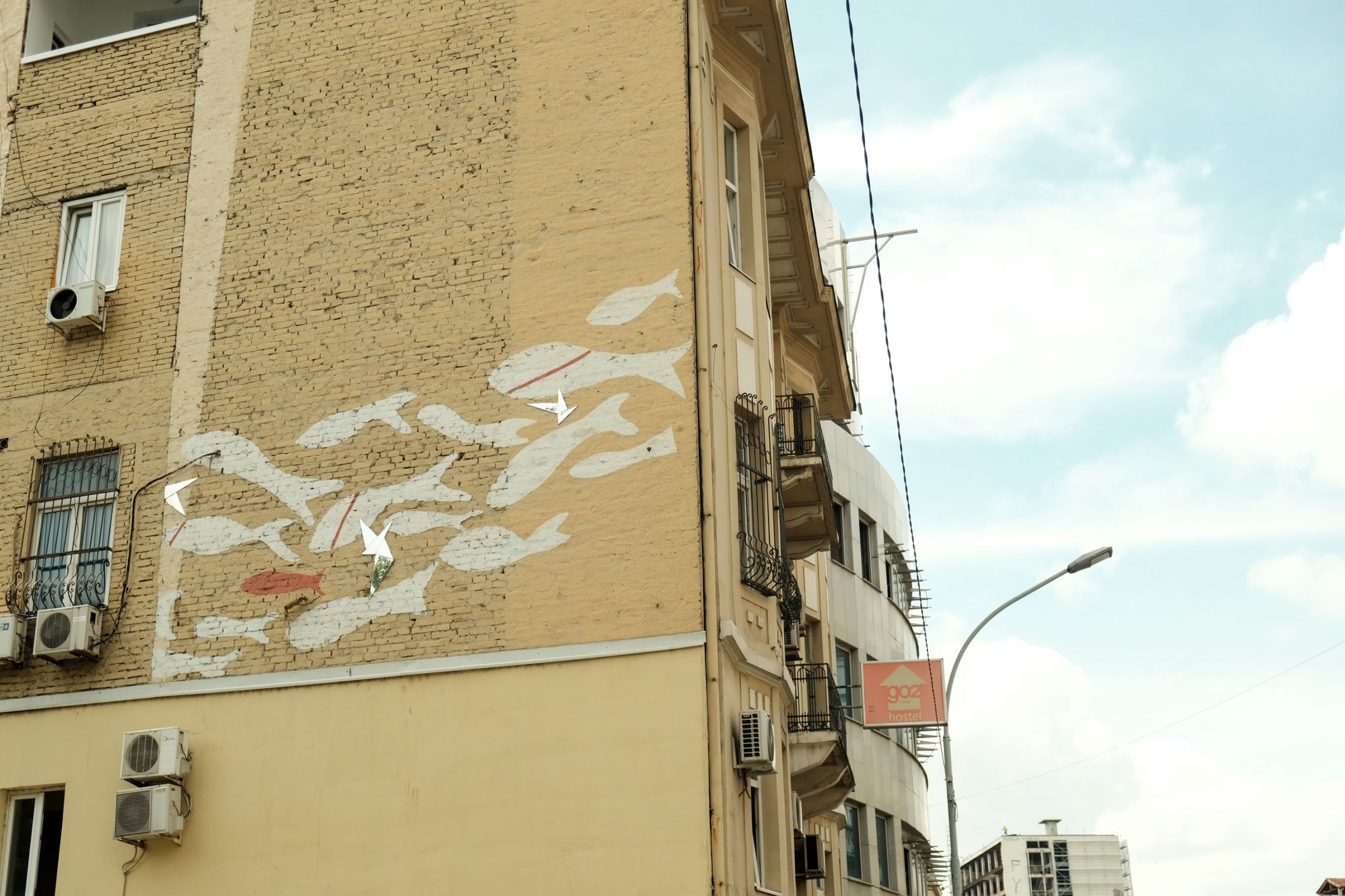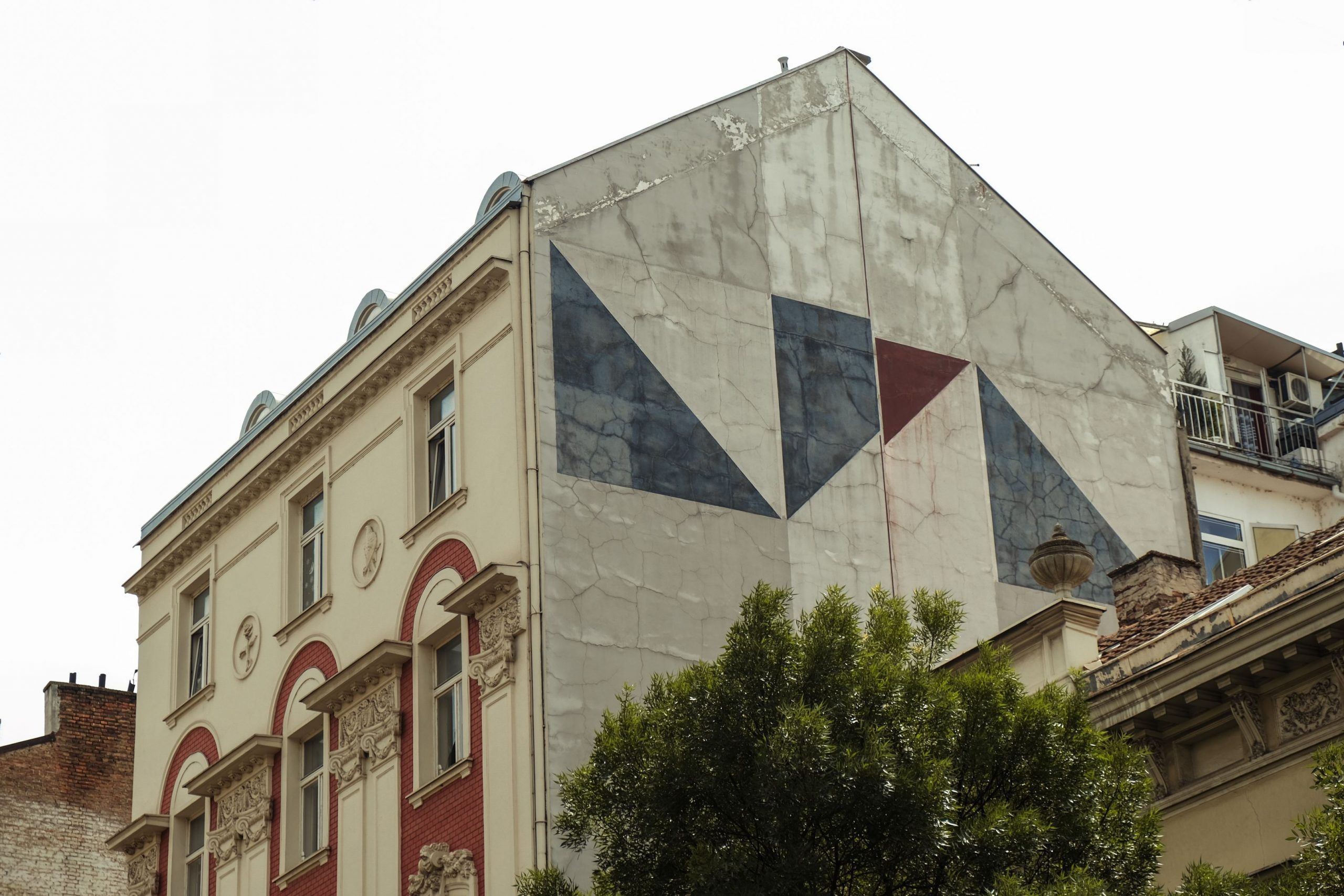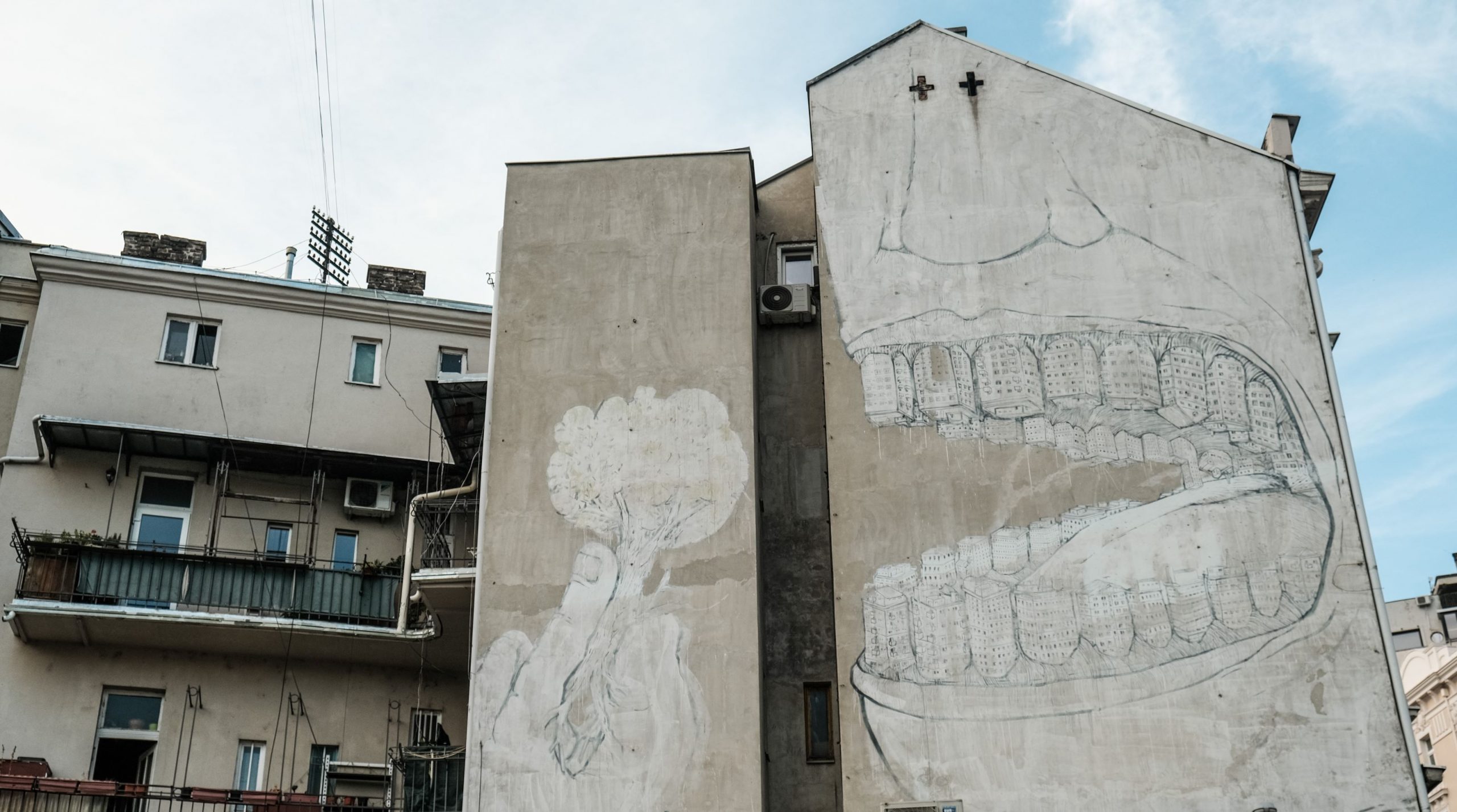Street art in Belgrade emerged around the 1980s, although the exact year cannot be pinpointed, and it has been evolving ever since. Over the years, Belgrade has become a hub for a vibrant and diverse culture of graffiti, stencils, murals, stickers, and various other artistic interventions in public spaces. Similar to Berlin, Belgrade stands out among European metropolises with a thriving street art culture expressed through various channels.
The beginnings of mural painting can be traced back to the late 1970s and early 1980s. In 1979, Lazar Vujaklija painted one of the first murals on the facade of the newly constructed Western Gate of Belgrade - the Genex Tower.
Professor at the Faculty of Fine Arts, Čedomir Vasić, played a crucial role in promoting murals in Belgrade. In 1984, together with his students from the Academy, he painted a mural in Rajićeva Street, across from the famous Akademija nightclub (in the building of the Faculty of Fine Arts). It was based on a sketch by Perica Donkov, a former student of the Faculty of Fine Arts who is now a well-known painter. The execution of the mural involved Vesna Knežević (Faculty of Fine Arts professor), Darija Kačić (Faculty of Fine Arts professor), Igor Stepančić, and Mirko Ognjanović, whose likeness was used in the sketch.
The mural was created for the May 25th Youth Day and was organized in collaboration with the Youth Alliance of Belgrade, Jugobanka (located on the backside of the then Jugobanka building), and the construction company Komgrap. The mural has been restored twice since then, first in 2000 and then in 2018.
In 1987, Čedomir Vasić painted a less conspicuous mural with a group of his students in Prizrenska Street. Inspired by a photograph by Aleksandar Simić, the mural depicted motifs of a gate, metro, and river. During a facade renovation, the mural underwent significant changes.
The institutional incentive for a new wave of mural painting came with the IX Non-Aligned Movement Summit in 1989 held in Belgrade. The then-mayor, Bogdan Bogdanović, initiated a city beautification plan that included painting murals on Belgrade's facades.
Renowned Yugoslav artists were invited to provide designs for mural paintings in the city center. One of the most famous is "The Runner" by Vladimir Veličković on the facade of the Rectorate building (Captain Miša's Mansion) on Studentski Trg.
Painters Miodrag B. Protić and Ibrahim Ljubović conceived images for the facades on Terazije, which were painted on both sides of the street.
During that time, Ivan Rabuzin created a mural on the facade at Knez Mihailova 37. The mural is in poor condition and has not been restored.

During the 1990s, several murals were painted. In the period of 1995-96, three murals were painted, one in Vasina Street and two in Kralja Milana Street. The murals were painted by Branko Miljuš (Vasina), Čedomir Vasić, and Danica Basta. After 1995, a few more murals were painted, but all of them were destroyed or damaged.
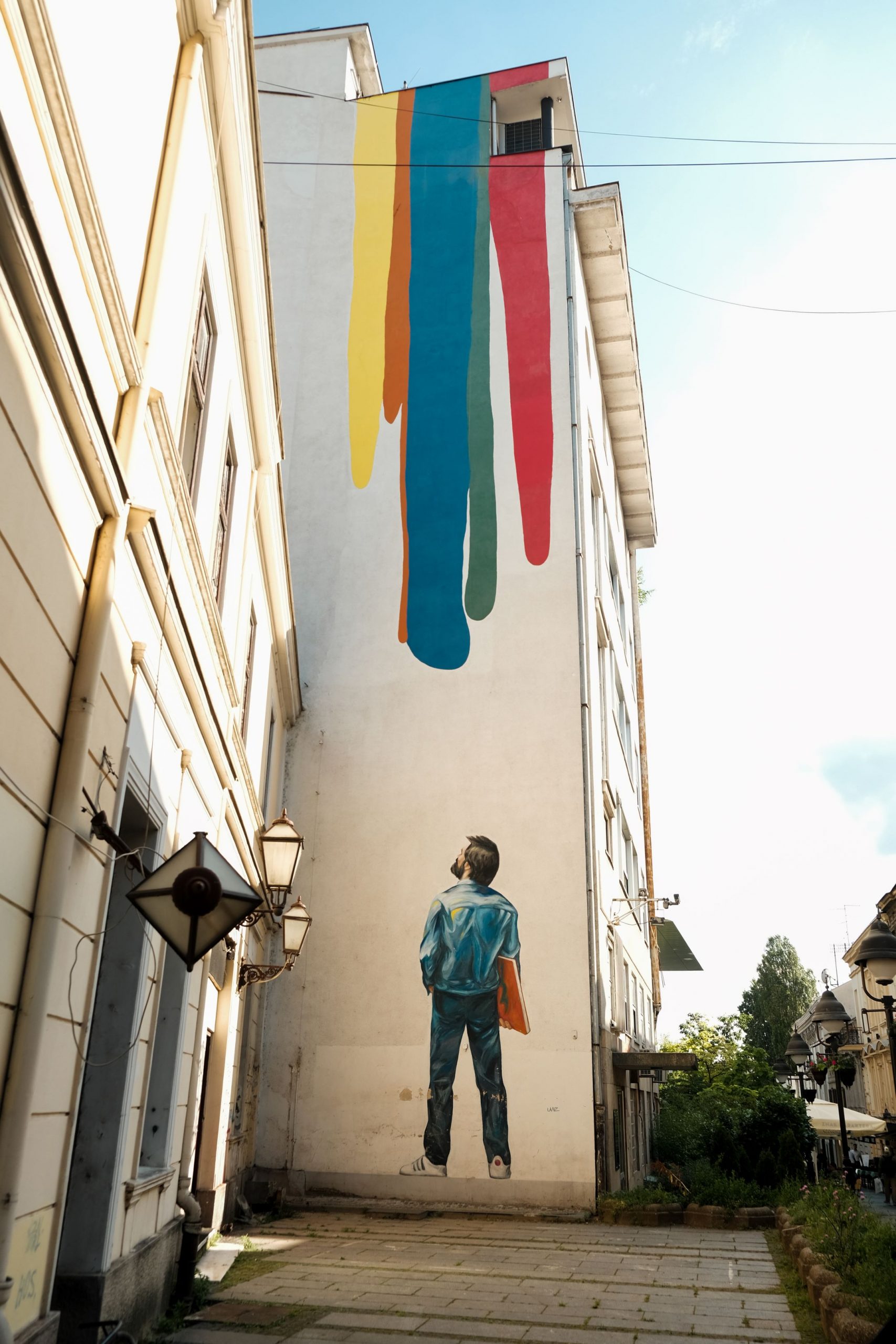

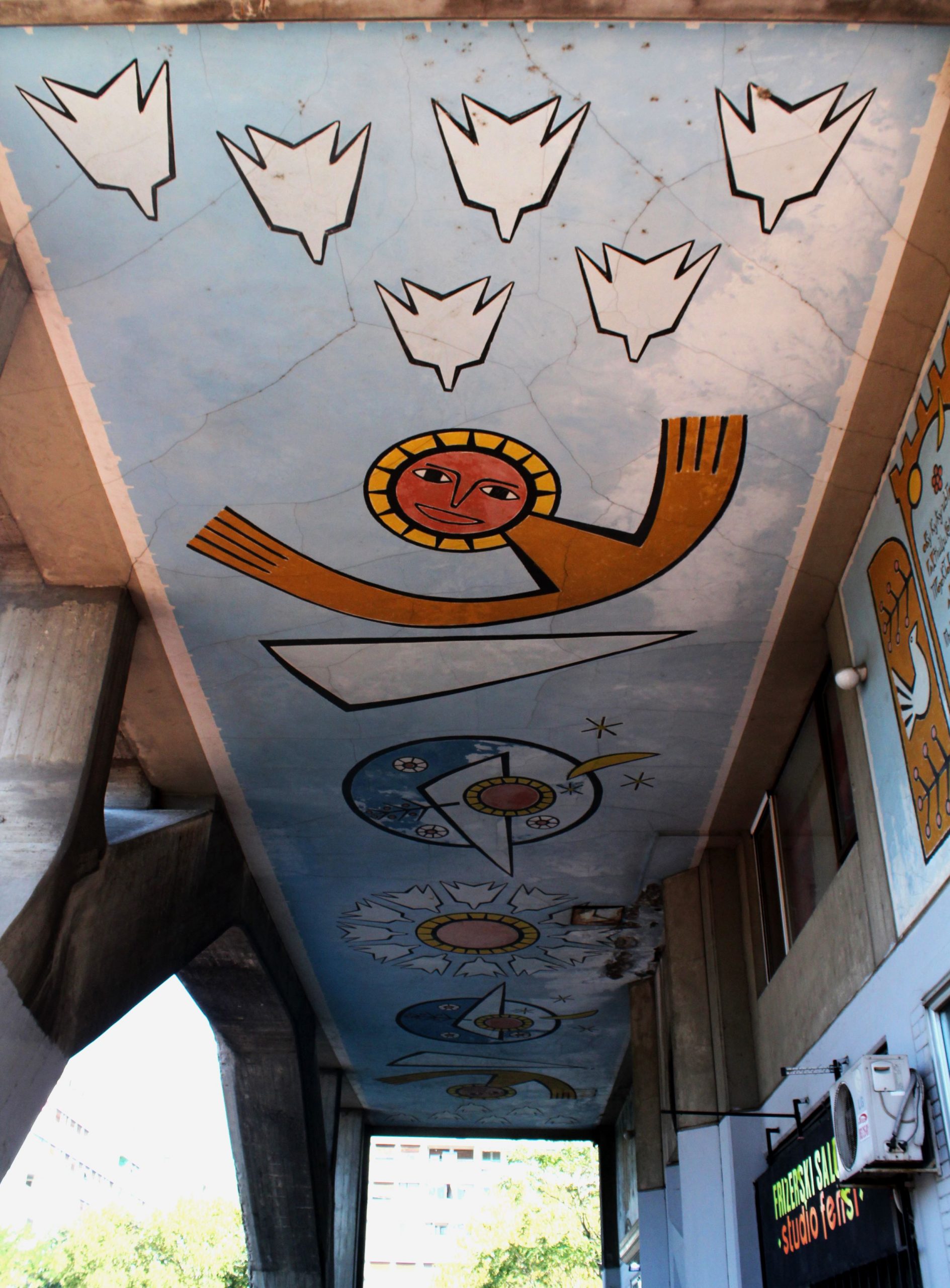
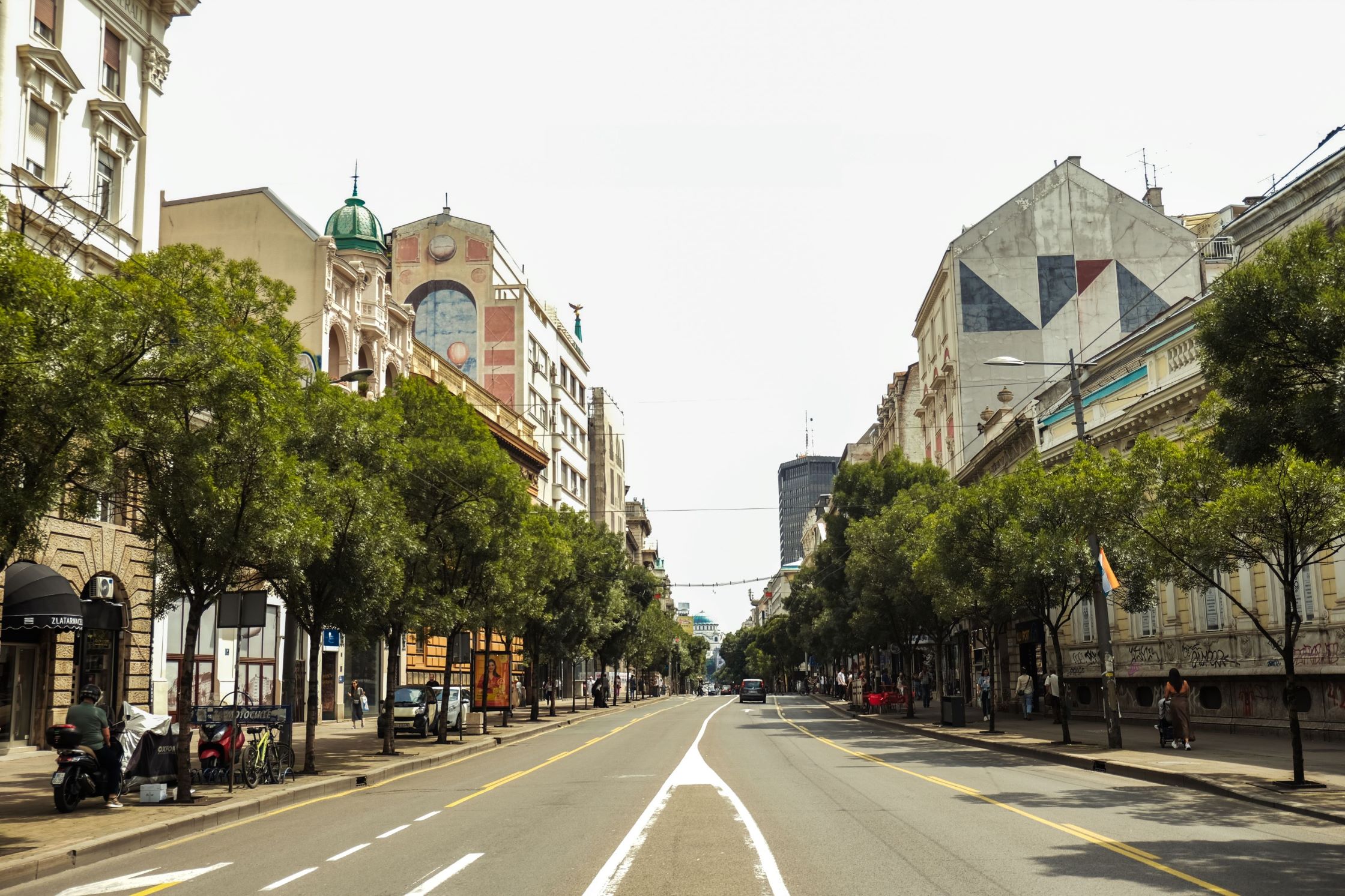

During the turbulent 1990s, institutional support for this type of urban city painting declined. In such a situation, an alternative graffiti scene emerged, operating independently and without official support. It was only in 2008 and 2009, as part of the Belgrade Summer Festival, that murals painted by Biljana Đurđević, Vladimir Perić Talent, and other local artists appeared. They were joined by global muralists such as the Polish artist Mariusz Waras, known as M-City, Italian artist Valerio Beruti, the artist known as Blu, French muralist Gijom Albi, also known as Remed, and others.
One of the most recognisably murals in that part of the city is "The Giant Eating the Tree," painted in 2009 on the facade of a building at Pop Lukina 6 by the artist Blu.

Text and photographs by Hana Šuica

